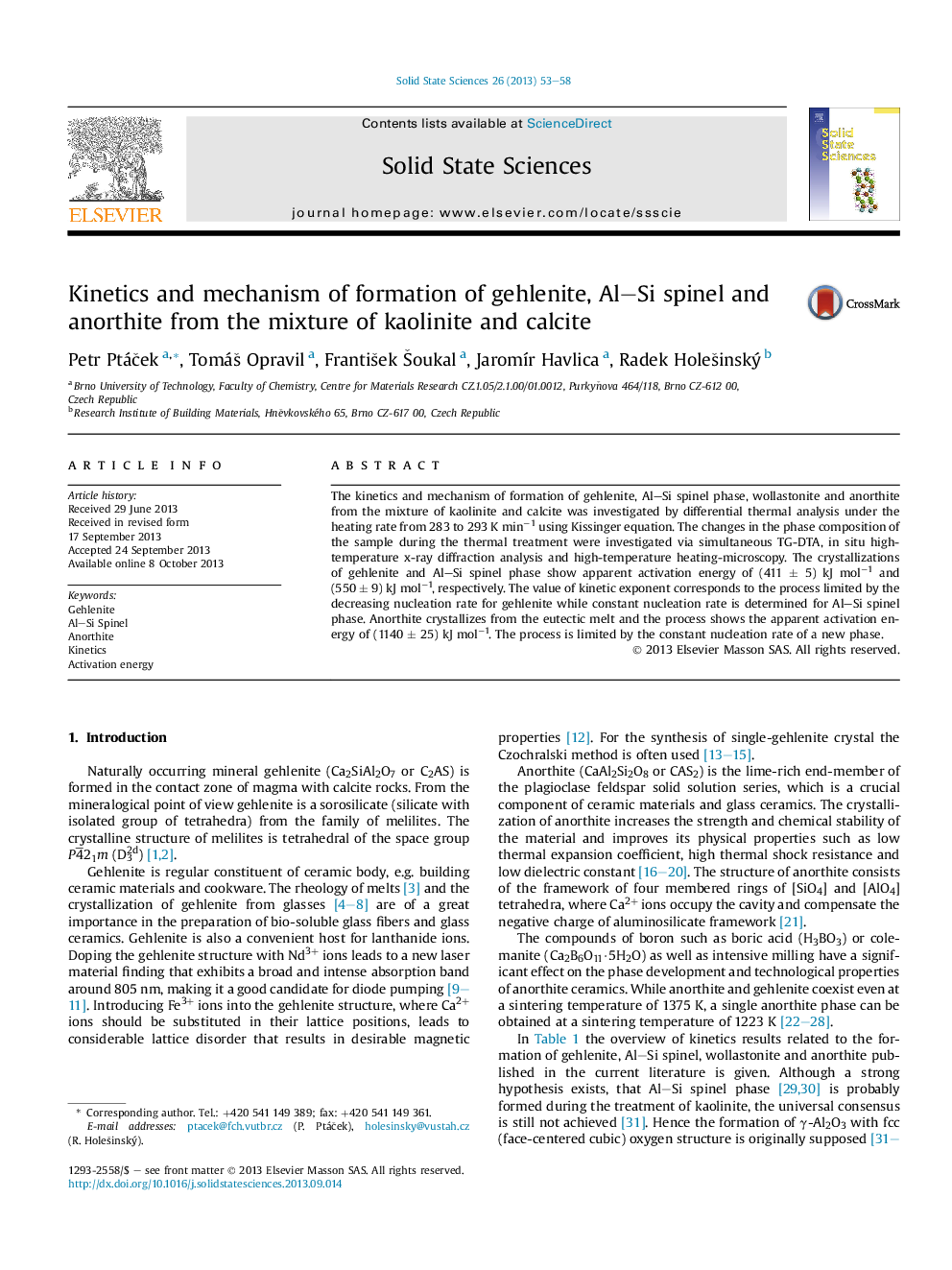| Article ID | Journal | Published Year | Pages | File Type |
|---|---|---|---|---|
| 1504617 | Solid State Sciences | 2013 | 6 Pages |
•The activation energy of the crystallization of gehlenite is 411 ± 5 kJ mol−1.•The process is controlled by the decreasing nucleation rate.•The crystallization of Al–Si spinel phase show Ea of 550 ± 9 kJ mol−1.•The crystallization of anorthite from the eutectic melt shows Ea of 1140 ± 25 kJ mol−1.•The formation of Al–Si spinel and anorthite is driven by constant nucleation rate.
The kinetics and mechanism of formation of gehlenite, Al–Si spinel phase, wollastonite and anorthite from the mixture of kaolinite and calcite was investigated by differential thermal analysis under the heating rate from 283 to 293 K min−1 using Kissinger equation. The changes in the phase composition of the sample during the thermal treatment were investigated via simultaneous TG-DTA, in situ high-temperature x-ray diffraction analysis and high-temperature heating-microscopy. The crystallizations of gehlenite and Al–Si spinel phase show apparent activation energy of (411 ± 5) kJ mol−1 and (550 ± 9) kJ mol−1, respectively. The value of kinetic exponent corresponds to the process limited by the decreasing nucleation rate for gehlenite while constant nucleation rate is determined for Al–Si spinel phase. Anorthite crystallizes from the eutectic melt and the process shows the apparent activation energy of (1140 ± 25) kJ mol−1. The process is limited by the constant nucleation rate of a new phase.
Graphical abstractFigure optionsDownload full-size imageDownload as PowerPoint slide
